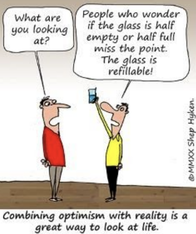|
Excerpt from Magito McLaughlin, D. & Smith, C.E.(2017). Positive behavior support. In J. Matson (Ed.), Handbook of Treatments for Autism Spectrum Disorder (pp. 437-457) Switzerland: Springer.
0 Comments
February’s ethics presentation given by Dr. Magito McLaughlin, focused on the BACB’s Professional and Ethical Compliance Code for Behavior Analysts. The presentation reviewed upcoming changes in NYS’ Scope of Practice Law and discussed how these changes will impact the practice of Behavior Analysis going forward. As NYS LBA’s enter into a wider Behavioral Healthcare environment, they will need to consider how different disability paradigms could affect how services are provided. Behavior Analysts should prepare for ongoing
education, training, and supervision as they consider: 1) the direct effects of diagnosis and progression, 2) the effects of medications on cognitive, emotional, and physical presentation, 3) factors related to resilience, 4) management of personal biases, 5) working with a wider team of people, 6) understanding caregiver relationships, 7) identifying resources that facilitate community participation, 8) reducing access/performance barriers, 9) learning about different funding options, and 10) integrating behavioral services into a broader healthcare environment. Resources for continued education and training were shared, along with a case presentation and discussion. January’s CEU offering was presented by Kristin Harris. The training included a review of the literature in the areas of assessment and treatment with a focus on the most prolifically researched intervention: response interruption and redirection. In light of the neurodiversity movement, the ethics of intervention and considerations were highlighted, namely, the behavior analyst's obligations to maximize the benefits of therapy, supporting clients' rights, and the hippocratic oath of "do no harm" from the Behavior Analyst Certification Board's Professional and Ethical Compliance Code (2014). Anxious behavior was operationalized as a set of behaviors that increase or decrease when an aversive event is signaled and a recent study was cited for its utility to assess and treat behaviors hypothesized to be maintained by automatic negative reinforcement. Three types of assessment procedures were discussed along with considerations for use in applied settings. They were: the traditional functional analysis (Iwata, 1992/1984), the BRIEF functional analysis (Roscoe et al., 2008) and the Automatic Reinforcement Screen (Querim et al., 2013), respectively. A multitude of procedural variations in treatment packages involving response interruption and redirection investigated at differential reinforcement procedures, reprimands, response blocking and response cost as highly idiosyncratic components. Their inclusion in a treatment package must take into account the quality and nature of the reinforcement context for the individual along with practicality and social significance. Most importantly, behavior analysts should conduct an ecological assessment to determine if modifications to the environment can be made with relative ease. Environmental enrichment cannot be over-emphasized as a tool for behavior change in the reduction of automatically maintained challenging behavior.
Excerpt from Magito McLaughlin, D. & Smith, C.E.(2017). Positive behavior support. In J. Matson (Ed.),Handbook of Treatments for Autism Spectrum Disorder (pp. 437-457) Switzerland: Springer.
Summary by Darlene Magito McLaughlin, Ph.D. Steven R. Covey’s #1 Bestseller presents a framework for personal effectiveness. Here are some important “take home” points that will take you into the start of a great school year.
Photo by Kraken Images on Unsplash.  By Kerri-Ann O'Halloran The topic of January's professional development training was school refusal. Currently, school refusal is a topic on the minds of parents, school personnel, and related service providers alike. Attendance at school is at the forefront of educational concerns at the national and local level. The presenters relied on research from Kearney (et. al.), as well as case studies from PBS clinicians, to provide a comprehensive presentation. This month’s feature article is a “guest spot” by Nathalie Theodore, J.D., MSW, LCSW. The article, The Perspective Shift That’ll Totally Transform Your Self-Care Practice was written in April, 2016 and published online at mindbodygreen.com. “Hats off” to Pat Tomanelli, for sharing her favorite “mindfulness” resources throughout the year. We’re hoping that you, too, will find these tips inspirational in your work!
 By Nancy Langdon Many of us at PBS wear the hat of “supervisor” or “supervisee.” These relationships are often formal arrangements with parameters specified by an outside organization, like the Behavior Analyst Certification Board (BACB). In this month’s training, Kaarin Anderson Ryan and Nancy Langdon discussed the effectiveness of supervision. We are fortunate to work with practitioners from multiple disciplines, including Behavior Analysts, Certified Teachers, Clinical Psychologists, Mental Health Counselors, and Social Workers. While each profession has its own supervision guidelines, there are a number of commonalities among them. A general goal of supervision is to promote the growth and development of the supervisee through teaching. Protection of the client is an essential component of supervision. The supervisor must monitor the performance of trainees and act as a gatekeeper for the profession. Finally, the supervisor needs to empower the supervisee to practice independently. Historically, supervision was assumed to be almost “osmotic”-- that is, the supervisee absorbed information from the supervisor just through discussion. Today, supervision is recognized as a distinct competency, with a new emphasis on training a supervisor how to supervise.  By John Innis In 2020, COVID 19 turned our lives upside down and inside out. This was a universally shared, yet individually experienced reality. Universally shared, in that everyone’s daily lives had been impacted. Individually experienced, as we have learned is that two people can have very different ways of responding to and coping with the stressors that come with changes. One friend, a cancer-survivor, had not been out of her house in a year except to walk her dog for 10 minutes a day and is mostly miserable. Another friend, a computer programmer, tells me that his life has changed very little because he was always an isolator anyway. Personally, I experienced alternating periods of relative “ok-ness” and abject grief and all shades in-between. I know a number of individuals I support who prefer having the built-in rationale for isolation that the pandemic has afforded them! Everyone is different in their response. Written by Carlene Fallica, MS, BCBA, LBA
There are numerous acute and chronic beneficial effects of exercise related to several cognitive, behavioral, and socio-emotional functions. There is growing evidence and an increase in published articles examining the relationship between physical fitness, physical activity, and academic performance in children. In addition, research provides evidence that physical exercise represents a promising alternative or additional treatment option for maintaining overall health. Regular exercise helps prevent and manage health concerns & protects against many chronic diseases including: stroke, metabolic syndrome, high blood pressure, type 2 diabetes, depression & anxiety, many types of cancer, arthritis and falls. Exercise helps to lower blood pressure, improve heart health, boost high-density lipoprotein (HDL) cholesterol, the "good" cholesterol, and decrease unhealthy triglycerides. Physical activity aids in weight management by preventing excess weight gain and helps maintain weight loss. Exercise improves and helps regulate sleep. Research shows that children with regular bedtime routines get to sleep sooner and awaken less often during the night than those without them. In addition, improved sleep hygiene may have some impact on next day attention. Increased physical activity is associated with better executive functioning, including inhibition, planning, working memory and processing speed, in children with ADHD (Gapin & Etnier, 2010). Increased neurotransmitters in the brain, reduced feelings of stress, anxiety & depression, a decrease in stress hormones, and improved mood are also associated with regular exercise. Muscle strength and balance are maintained with exercise, as well as improved joint pain and stiffness. Improved cognitive function for all age groups including long-term and short-term memory and neuron health are significant neuropsychological benefits. The global impact of exercise on the brain involves improved cognitive functioning, neurogenesis, neuroplasticity and neurochemistry. The increase in heart rate and breathing, oxygen in the bloodstream and flow of blood to the brain along with the release of neurotransmitters allows for an increase in oxygen and nutrients, leading to the production and growth of new neurons (neurogenesis). Neurotrophins are proteins that aid neuron survival & function. Both neurotrophins and hormones in the brain keep neurons healthy, promote growth of new neurons, improve neural connections and increase brain volume. Neuroplasticity, synaptic plasticity and/or alterations to the strength of already existing synapses improve how existing neurons work. BDNF (Brain Derived Neurotrophic Factor) is a protein that promotes the survival of nerve cells by playing a role in the growth, maturation (differentiation), and maintenance of these cells. BDNF is crucial for learning and adaptation. BDNF upregulates (increase in the number of receptors) neurotrophins, which support the survival and differentiation of neurons in the developing brain, dendritic branching, and synaptic machinery in the adult brain. In the brain, the BDNF protein is active at the connections between nerve cells (synapses), where cell-to-cell communication occurs. The synapses can change and adapt over time in response to experience, a characteristic called synaptic plasticity. The BDNF protein helps regulate synaptic plasticity, which is important for learning and memory. Certain types of physical exercise have been shown to significantly increase BDNF synthesis in the human brain, a phenomenon which is partly responsible for exercise-induced neurogenesis and improvements in cognitive function. BDNF may have long term benefits including neural plasticity. These sustained benefits of exercise are best achieved with 30 minutes of moderate/intense or 10-15 minutes of high intensity. Our behavior has an impact on the level of BDNF in the brain. It is important to monitor and maintain healthy and appropriate levels of exercise, stress, sleep and nutrition. The primary drive for changing our brain and maintaining overall health is our behavior. |
AuthorWith 30+ years in the field of Behavior Analysis and 6 Ted Carr Alums, we have lots to discuss and share! Archives
April 2023
Categories |
|
APA and BACB Approved Providers
|
Join us on social media
Please report broken links to [email protected]
|





 RSS Feed
RSS Feed


